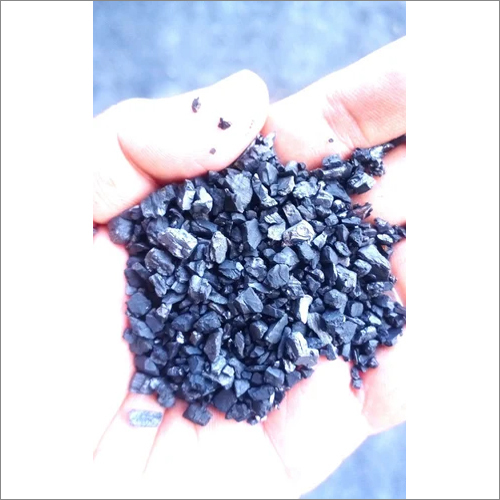Anthracite Coal
Price 25000 INR/ Metric Ton
Anthracite Coal Specification
- Gross Calorific Value
- 7800 Kcal/Kg
- Dimension (L*W*H)
- 100 mm
- Coal Calorific
- High
- Size
- 100 mm
- Product Type
- Anthracite Coal
- Material
- Carbon
- Shape
- Carbon Block
- Moisture (%)
- 5%
- Sulphur Content (%)
- 0.5%
- Fixed Carbon
- 82%
- Phosphorus Content (%)
- 0.01%
- Volatile Matter (%)
- 5%
- Ash Content (%)
- 12%
- Weight
- 50 Kg
Anthracite Coal Trade Information
- Minimum Order Quantity
- 10 Metric Ton
- FOB Port
- vadodara
- Payment Terms
- Cash Advance (CA), Cash in Advance (CID), Cheque
- Supply Ability
- 10000 Per Month
- Delivery Time
- 7 Days
- Main Domestic Market
- All India
About Anthracite Coal
Anthracite Coal is a type of coal that is known for its high carbon content and low moisture content. It is a hard, shiny, and black rock that is primarily used for heating and energy production. Anthracite coal is formed over millions of years from the remains of plants and trees that have been compressed and heated deep within the earth. It is the highest grade of coal and is valued for its energy content, low sulfur content, and high heating value.
Specification ofAnthracite Coal
|
Grade |
Carbonadditive |
|
Form |
1 to 5mm, 5 to 25 mm, 0 to 1 mm |
|
Usage/Application |
Industrial |
Product Specification
|
Fixed Carbon |
92.00 %% - 94.00 %% DB Basis |
|
Sulphur |
0.60 %% - 0.80%% ARB |
|
Volatile Matter |
01.70 %% - 02.00%% ARB |
|
Ash |
03.50 %% - 04.50 %% ARB |
|
Total Moiture |
07.00 %% -08.00 %% |
|
Minimum Order Quantity |
30 Tonne |
Superior Energy Efficiency
Anthracite Coal is renowned for its remarkable thermal efficiency, ensuring optimal performance in demanding industrial processes. With a high fixed carbon content of 82%% and a gross calorific value of 7800 Kcal/Kg, it delivers sustained energy output, making it a preferred choice for facilities prioritizing operational economy and dependable fuel sources.
Environmentally Responsible Choice
This coal grade is distinguished by its low sulfur emission, contributing to reduced environmental impact. The fixed carbon and minimal phosphorus content (0.01%%) ensure cleaner combustion. Anthracites slow combustion rate offers controlled energy release, promoting both safety and sustainability in large-scale industrial applications.
FAQs of Anthracite Coal:
Q: How should Anthracite Coal be stored to ensure maximum efficiency and safety?
A: Anthracite Coal should be kept in a dry and covered area to prevent moisture absorption, which is limited to 5%%. Proper storage maintains its hardness, combustion rate, and calorific value, ensuring consistent industrial usage and minimizing environmental risks.Q: What makes Anthracite Coal suitable for industrial applications?
A: Its high-grade quality, excellent thermal efficiency, low sulfur content, and slow combustion rate offer reliable and clean energy. The consistent size and form (carbon block) ensure optimal handling and performance in industrial settings.Q: When is Anthracite Coal most commonly used in industry?
A: Anthracite Coal is typically used whenever high-efficiency, low-emission solid fuel is needed, such as in metallurgical processes, power generation, and steam productionall benefiting from its slow combustion and high calorific value.Q: Where does this Anthracite Coal originate and how is it supplied?
A: This particular Anthracite Coal is sourced from India and delivered in securely packed 50 Kg bags to manufacturers and suppliers, ensuring product integrity throughout transport and storage.Q: What is the process for using Anthracite Coal in industrial setups?
A: Industries generally feed solid Anthracite Coal blocks into boilers, furnaces, or kilns, where the slow combustion provides steady energy. The coals high purity (fixed carbon 82%%) allows for low ash (12%%) and minimal emissions during use.Q: What are the environmental benefits of choosing Anthracite Coal?
A: With low sulfur emissions, reduced volatile matter (5%%), and minimal phosphorus (0.01%%), Anthracite Coal produces cleaner exhaust gases, helping industries comply with environmental regulations while supporting sustainability goals.Q: How does the coals excellent calorific value benefit industrial processes?
A: Its high calorific value (7800 Kcal/Kg) ensures efficient energy transfer, reducing overall fuel consumption and operational costs while delivering consistent heating required for demanding industrial operations.


Price:
- 50
- 100
- 200
- 250
- 500
- 1000+
GST : 24AATFK1445N1ZV
 |
Krishna Carbon
All Rights Reserved.(Terms of Use) Developed and Managed by Infocom Network Private Limited. |
 English
English Spanish
Spanish French
French German
German Italian
Italian Chinese (Simplified)
Chinese (Simplified) Japanese
Japanese Korean
Korean Arabic
Arabic Portuguese
Portuguese
 Send Inquiry
Send Inquiry

